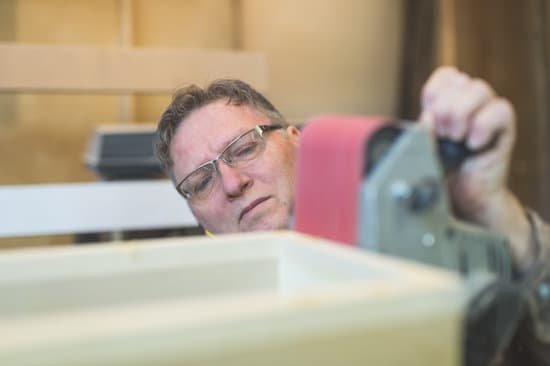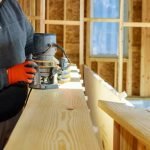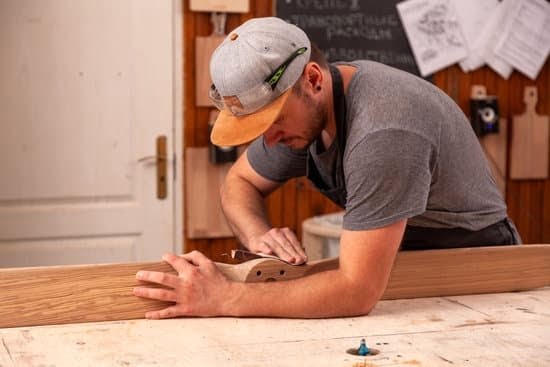Paste wax buildup on woodworking tools can be a common issue for woodworkers, but with the right tools and techniques, it can be easily remedied. In this article, we will explore how to remove paste wax buildup on woodworking tools, from identifying the signs of buildup to step-by-step guides and tips for prevention.
Over time, paste wax can accumulate on woodworking tools such as saw blades, chisels, and hand planes, affecting their performance and leaving a dull residue. Understanding the signs of paste wax buildup is crucial for maintaining the efficiency and longevity of your tools.
To effectively remove paste wax buildup, you will need specific tools and materials that are designed for this purpose. We will discuss these in detail, as well as provide a step-by-step guide on removing paste wax buildup from woodworking tools. Additionally, we will share valuable tips for preventing paste wax buildup in the future to keep your tools in top condition.
Identifying the Signs of Paste Wax Buildup
When it comes to woodworking, having clean and well-maintained tools is crucial for achieving quality results. One common issue that woodworkers may encounter is paste wax buildup on their tools. Identifying the signs of paste wax buildup is important in order to address the problem effectively.
Reduced Cutting Performance
One of the main signs of paste wax buildup on woodworking tools is a reduced cutting performance. When there is an accumulation of paste wax on the blades or cutting edges of your tools, it can affect their ability to make clean and precise cuts. You may notice that your saws are not cutting as smoothly as they used to, or your planes are leaving behind rough surfaces.
Visible Residue
An obvious sign of paste wax buildup is the presence of visible residue on your woodworking tools. This can appear as a sticky or waxy film on the surfaces of your tools, particularly on areas where friction occurs during use. If you notice any discoloration or buildup on the metal or wooden parts of your tools, it could be an indication of paste wax accumulation.
Dullness and Lack of Shine
Paste wax buildup can also cause your woodworking tools to lose their luster and shine. If you find that they look dull and lack the usual sheen they once had, it could be a result of residue from paste wax setting in over time.
By being able to recognize these signs, woodworkers can promptly take action to remove paste wax buildup from their tools, ensuring optimal performance and longevity.
Tools and Materials Needed for Removing Paste Wax Buildup
When it comes to removing paste wax buildup on woodworking tools, having the right tools and materials is essential for a successful cleaning process. Here’s a list of what you’ll need:
Tools:
Materials:
Now that you have gathered all the necessary tools and materials, it’s time to roll up your sleeves and start removing the stubborn paste wax buildup on your woodworking tools.
Step-by-step Guide on Removing Paste Wax Buildup from Woodworking Tools:
1. Disassemble the tools if possible: Before starting the cleaning process, it’s best to disassemble the woodworking tools to access hidden areas where the wax buildup may be present.
2. Brush off loose debris: Use a soft-bristle brush to remove any loose debris and dirt from the surface of the tools. This will make the cleaning process more effective.
3. Apply mineral spirits or paint thinner: Soak a clean cloth in mineral spirits or paint thinner and gently rub it onto the surface with wax buildup. This will help dissolve and soften the wax, making it easier to remove.
4. Use steel wool or fine-grit sandpaper: For stubborn areas of paste wax buildup, gently scrub with steel wool or fine-grit sandpaper. Be careful not to scratch the surface of your woodworking tools.
5. Clean and lubricate: After removing the paste wax buildup, clean the tools with a mixture of vinegar, dish soap, and water. Dry them thoroughly and apply a rust inhibitor or lubricant to protect the metal surfaces.
Now that you know how to remove paste wax buildup on woodworking tools, you can keep your equipment in top condition for better performance and longevity.
Step-by-Step Guide on Removing Paste Wax Buildup From Woodworking Tools
Paste wax buildup on woodworking tools can be a common issue that affects the performance and longevity of the tools. Over time, paste wax can accumulate on saw blades, planes, chisels, and other woodworking tools, leading to decreased cutting efficiency and potentially causing damage to the tools. In this section, we will provide a step-by-step guide on how to effectively remove paste wax buildup from woodworking tools.
Before starting the process of removing paste wax buildup, it’s important to gather the necessary tools and materials. You will need mineral spirits or naphtha, a stiff-bristle brush, rags or shop towels, and a mild dish soap solution for cleaning.
The first step in removing paste wax buildup is to thoroughly clean the affected woodworking tool with mineral spirits or naphtha. These solvents are effective in breaking down the waxy residue, allowing you to remove it more easily.
Use a clean rag or shop towel soaked in mineral spirits to wipe down the tool, ensuring that all areas with buildup are covered. Once the majority of the paste wax has been removed, use a stiff-bristle brush to scrub any remaining residue from hard-to-reach areas such as grooves or teeth.
| Tools and Materials | Step-by-Step Guide |
|---|---|
| Mineral spirits or naphtha | Clean affected tool with solvent-soaked rag |
| Stiff-bristle brush | Scrub remaining residue from hard-to-reach areas |
Tips for Preventing Paste Wax Buildup in the Future
Proper Application
One of the key factors in preventing paste wax buildup on woodworking tools is to ensure proper application in the first place. When applying paste wax to your tools, make sure to use a clean cloth and apply a thin, even layer. Avoid applying too much wax, as this can lead to excess buildup over time.
Regular Cleaning
Regularly cleaning your woodworking tools after each use can help prevent paste wax buildup. After applying wax, take the time to wipe down your tools thoroughly with a clean cloth to remove any excess wax. This will help prevent any buildup from accumulating on the surfaces of your tools.
Use Dust Collection Systems
Using dust collection systems in your workshop can also help prevent paste wax buildup on your woodworking tools. By minimizing the amount of sawdust and debris that accumulates on your tools, you can reduce the chances of paste wax buildup occurring. Additionally, regularly cleaning out your dust collection system can further aid in preventing buildup on your woodworking tools.
By following these tips for preventing paste wax buildup in the future, you can maintain clean and well-maintained woodworking tools. Taking proactive steps to prevent excess buildup will not only keep your tools in optimal condition but also save you time and effort in removing stubborn paste wax residue down the line.
Common Mistakes to Avoid When Removing Paste Wax Buildup
When removing paste wax buildup from woodworking tools, it’s important to be aware of common mistakes that can worsen the situation. One of the most common mistakes is using abrasive materials or harsh chemicals to try to scrub off the wax. This can damage the surface of the tool and may even cause it to lose its effectiveness. Instead, it’s crucial to use gentle methods and take your time when removing the buildup.
Another mistake to avoid is not cleaning the tools properly after removing the paste wax buildup. Residue from the removal process can still be present on the tools, which can affect their performance if not properly cleaned off. It’s important to thoroughly clean and dry the woodworking tools after removing any buildup to ensure that they are in optimal condition for future use.
Additionally, one common mistake is not taking preventive measures after removing the paste wax buildup. Without taking steps to prevent future buildup, you may find yourself having to go through this process again sooner than you think. Implementing proper maintenance and storage practices for your woodworking tools can help prevent paste wax buildup in the future.
| Common Mistakes | How to Avoid |
|---|---|
| Using abrasive materials or harsh chemicals | Use gentle methods and take your time |
| Not cleaning tools properly after removal | Thoroughly clean and dry tools after removal |
| Not taking preventive measures | Implement proper maintenance and storage practices |
Alternative Methods for Removing Paste Wax Buildup
Paste wax buildup on woodworking tools can be a real headache, but there are several alternative methods for removing it effectively. Whether you prefer using natural cleaning agents or specialty products designed specifically for this purpose, there are options available to suit your preferences and needs. Below are some alternative methods for removing paste wax buildup on woodworking tools:
- Use mineral spirits: Mineral spirits can be an effective solvent for breaking down and removing paste wax buildup from woodworking tools. Simply apply a small amount of mineral spirits to a clean cloth and gently rub the affected areas of the tool until the paste wax begins to dissolve. Be sure to wear gloves and work in a well-ventilated area when using this method.
- Try vinegar and water solution: A mixture of equal parts white vinegar and water can also be used to remove paste wax buildup from woodworking tools. Apply the solution to a clean cloth and use it to wipe down the affected areas, then follow up with a dry cloth to remove any remaining residue.
- Use a commercial wax remover: There are numerous commercial products available that are specifically formulated for removing paste wax buildup from woodworking tools. These products typically come in liquid or spray form and can be applied directly to the affected areas according to the manufacturer’s instructions.
Consider experimenting with different methods to find out which one works best for you. Remember that regular maintenance and cleaning of your woodworking tools is essential for their longevity and performance.
Additional Tips
- Always test any cleaning method on a small, inconspicuous area of your tool first to ensure that it does not cause damage.
- After removing the paste wax buildup, thoroughly dry and reapply an appropriate protective coating (such as paste wax, oil, or silicone spray) to prevent rust or corrosion.
Conclusion
In conclusion, maintaining clean woodworking tools and regularly removing paste wax buildup not only ensures the longevity of your equipment but also contributes to the quality of your work. By understanding the signs of paste wax buildup and having the necessary tools and materials on hand, you can effectively remove any residue that may inhibit the performance of your woodworking tools. Following a step-by-step guide and implementing preventive measures can help you keep your tools in optimal condition.
Regular maintenance of woodworking tools is essential for ensuring precision and safety. By preventing paste wax buildup, you can avoid potential accidents or mistakes that may arise from compromised equipment. Additionally, regularly cleaning and maintaining your tools can save time and effort in the long run, as it helps maintain their effectiveness and prolongs their lifespan.
In essence, by consistently removing paste wax buildup on woodworking tools as part of a comprehensive maintenance routine, you can enhance the overall quality of your work while extending the durability of your equipment. Taking care of your woodworking tools not only benefits you in terms of efficiency and precision but also reflects a commitment to craftsmanship and professionalism.
Frequently Asked Questions
What Dissolves Paste Wax?
Paste wax can be dissolved using mineral spirits or a specialized wax-removing solvent. These products work to break down the wax and make it easier to wipe away from the surface.
How Do You Remove Excess Wax Paste?
To remove excess paste wax, use a clean, lint-free cloth to gently buff and wipe away the excess. It may take some elbow grease, but the goal is to remove any remaining wax that hasn’t been absorbed into the wood.
How Do You Remove Built Up Wax From Wood?
Built-up wax on wood can be removed by applying a solvent specifically designed for this purpose. Allow the solvent to penetrate and soften the wax, then gently scrape it off with a plastic scraper or fine steel wool. Finally, clean the wood thoroughly with a wood cleaner to ensure all residue is removed.

Hi everyone! I’m a woodworker and blogger, and this is my woodworking blog. In my blog, I share tips and tricks for woodworkers of all skill levels, as well as project ideas that you can try yourself.





